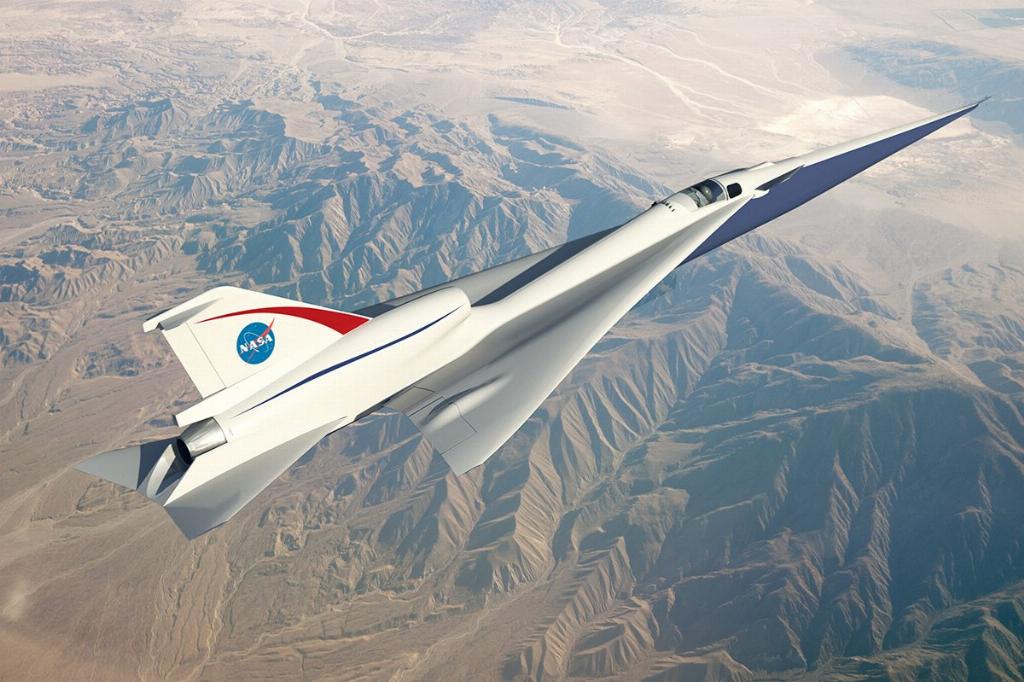F414 engine to power X-59 supersonic plane delivered to NASA

The F414-GE-100 engine that will power NASA’s X-59 Quiet SuperSonic Technology X-plane has been delivered to the Armstrong Flight Research Center.
The F414-GE-100 engine that will power NASA’s X-59 Quiet SuperSonic Technology X-plane (QueSST) has been delivered to the Armstrong Flight Research Center.
Nearly 13ft long, 3ft in diameter, the engine packs 22,000lb of afterburner enhanced jet propulsion.
At the centre it will be checked out and inspected before it is transported to nearby Palmdale for eventual installation into the X-59, which is now under construction at Lockheed Martin’s Skunk Works factory.
“Taking delivery of the engine from General Electric marks another exciting, huge milestone for us in building the X-59,” said Raymond Castner, the propulsion lead for the X-59 at NASA’s Glenn Research Center in Cleveland.
Two engines were delivered. One to serve as the primary engine and the other to be used as a backup when needed.
“This just adds even more anticipation as we look forward to seeing that big flame come out the back of the aircraft as it takes off for the first time,” Castner said.
Assembled and initially tested at GE Aviation’s Riverworks facility in Lynn, Mass., the engine will power the X-59 on missions to gather information about how the public will react to the quieter sonic booms the aircraft is designed to produce – if they hear anything at all.
Data collected will be shared with federal and international regulators to help set new rules that may allow supersonic flight over land and enable a whole new market for commercial faster-than-sound air travel.
“It’s important to note that neither the X-59, nor this particular engine, are prototypes for a future commercial supersonic airliner,” Castner said. “This hardware is just for proving the airplane can produce quiet sonic thumps and measure community response.”

Procuring the power
As preliminary designs for the X-59 were put together several years ago, the initial plan was to power the aircraft with the same jet engines used by NASA’s F/A-18 research jets based at Armstrong.
“We had an inventory of spare engines and parts and thought we could use the engines we already owned, but that didn’t pan out,” Castner said.
The problem was the engine – GE’s model F404 – couldn’t generate enough thrust to achieve the flight performance goals for the X-59. As designed, it took two of the engines to power the F/A-18, but the X-59 only had room for a single engine.
Working with GE, the solution was found in adapting the F404’s next-generation improvement, the F414 engine, into a configuration that would both satisfy the X-59’s power needs and physical size.
Anthony Hazlett, GE’s X-59 demo model engineer at the Lynn facility, was responsible for leading the group that came up with the unique engine design for the experimental supersonic airplane.
“We had developed a single-engine version of the F414 for Sweden’s Saab JAS 39E Gripen fighter that we determined would work for the X-59 with some modifications, so we derived a new engine model, the F414-GE-100,” Hazlett said.
“The tried and true guts of the engine, all the turbomachinery, are the same or very similar. But the engine’s external design and the way the engine operates was upgraded.”
That included something as complicated as writing new control systems software so the engine and X-59 could talk to each other, and something as relatively simple as adding plumbing in new places so fuel could flow from the airplane to the engine.













